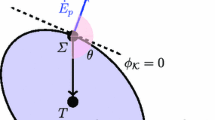Abstract
The main aim of this paper is to present an algorithm and the solution to the nonlinear plasticity problems with random parameters. This methodology is based on the finite element method covering physical and geometrical nonlinearities and, on the other hand, on the generalized nth order stochastic perturbation method. The perturbation approach resulting from the Taylor series expansion with uncertain parameters is provided in two different ways: (i) via the straightforward differentiation of the initial incremental equation and (ii) using the modified response surface method. This methodology is illustrated with the analysis of the elasto-plastic plane truss with random Young’s modulus leading to the determination of the probabilistic moments by the hybrid stochastic symbolic-finite element method computations.
Similar content being viewed by others
References
Buryachenko V (1999) Elastic–plastic behavior of elastically homogeneous materials with a random field of inclusions. Int J Plast 15: 687–720
Chaboche JL (2008) A review of some plasticity and viscoplasticity constitutive theories. Int J Plast 24: 1642–1693
Garmestani H, Lin S, Adams BL (1998) Statistical continuum theory for inelastic behavior of a two-phase medium. Int J Plast 14(8): 719–731
Gutierrez MA, de Borst R (1999) Numerical analysis of localization using a viscoplastic regularization: influence of stochastic material defects. Int J Numer Methods Eng 44: 1823–1841
Harth T et al (2004) Identification of material parameters for inelastic constitutive models: statistical analysis and design of experiments. Int J Plast 20: 1403–1440
Hinton E, Owen DRJ (1977) Finite element programming. Academic Press, New York
Jefferson G et al (2005) Two-point probability distribution function analysis of co-polymer nano-composites. Int J Plast 21: 185–198
Kamiński M (2007) Generalized perturbation-based stochastic finite element method in elastostatics. Comput Struct 85(10): 586–594
Kamiński M (1999) Probabilistic characterization of porous plasticity in solids. Mech Res Commun 26(1): 99–106
Kaneko K, Oyamada T (2000) A viscoplastic constitutive model with effect of aging. Int J Plast 16: 337–357
Kleiber M, Hien TD (1992) The stochastic finite element method: basic perturbation technique and computational implementation. Wiley, Chichester
Kleiber M, Woźniak CZ (1991) Nonlinear mechanics of structures. Kluwer Academic Publishers, Dordrecht
Kleiber M et al (1997) Parameter sensitivity in nonlinear mechanics. Wiley & Sons, New York
Krajcinovic D, Mastilovic S (1999) Statistical models of brittle deformation. Part I. Introduction. Int J Plast 15: 401–426
Mastilovic S, Krajcinovic D (1999) Statistical models of brittle deformation. Part II. Computer simulations. Int J Plast 15: 427–456
Lin YK (1967) Probabilistic theory of structural dynamics. McGraw-Hill, New York
Liu WK, Belytschko T, Mani A (1986) Random field finite elements. Int J Numer Methods Eng 23: 1831–1845
Melchers RE (2002) Structural reliability analysis and prediction. Wiley & Sons, New York
Oden JT (1972) Finite elements of nonlinear continua. McGraw-Hill, New York
Ostoja-Starzewski M (2005) Scale effects in plasticity of random media: status and challenges. Int J Plast 21: 1119–1160
Owen DRJ, Hinton E (1980) Finite elements in plasticity—theory and practice. Pineridge Press, Swansea
Rinaldi A, Lai YC (2007) Statistical damage theory of 2D lattices: energetics and physical foundations of damage parameter. Int J Plast 23: 1796–1825
Zaiser M, Aifantis EC (2006) Randomness and slip avalanches in gradient plasticity. Int J Plast 22: 1432–1455
Author information
Authors and Affiliations
Corresponding author
Rights and permissions
About this article
Cite this article
Kamiński, M.M. A generalized stochastic perturbation technique for plasticity problems. Comput Mech 45, 349–361 (2010). https://doi.org/10.1007/s00466-009-0455-7
Received:
Accepted:
Published:
Issue Date:
DOI: https://doi.org/10.1007/s00466-009-0455-7




